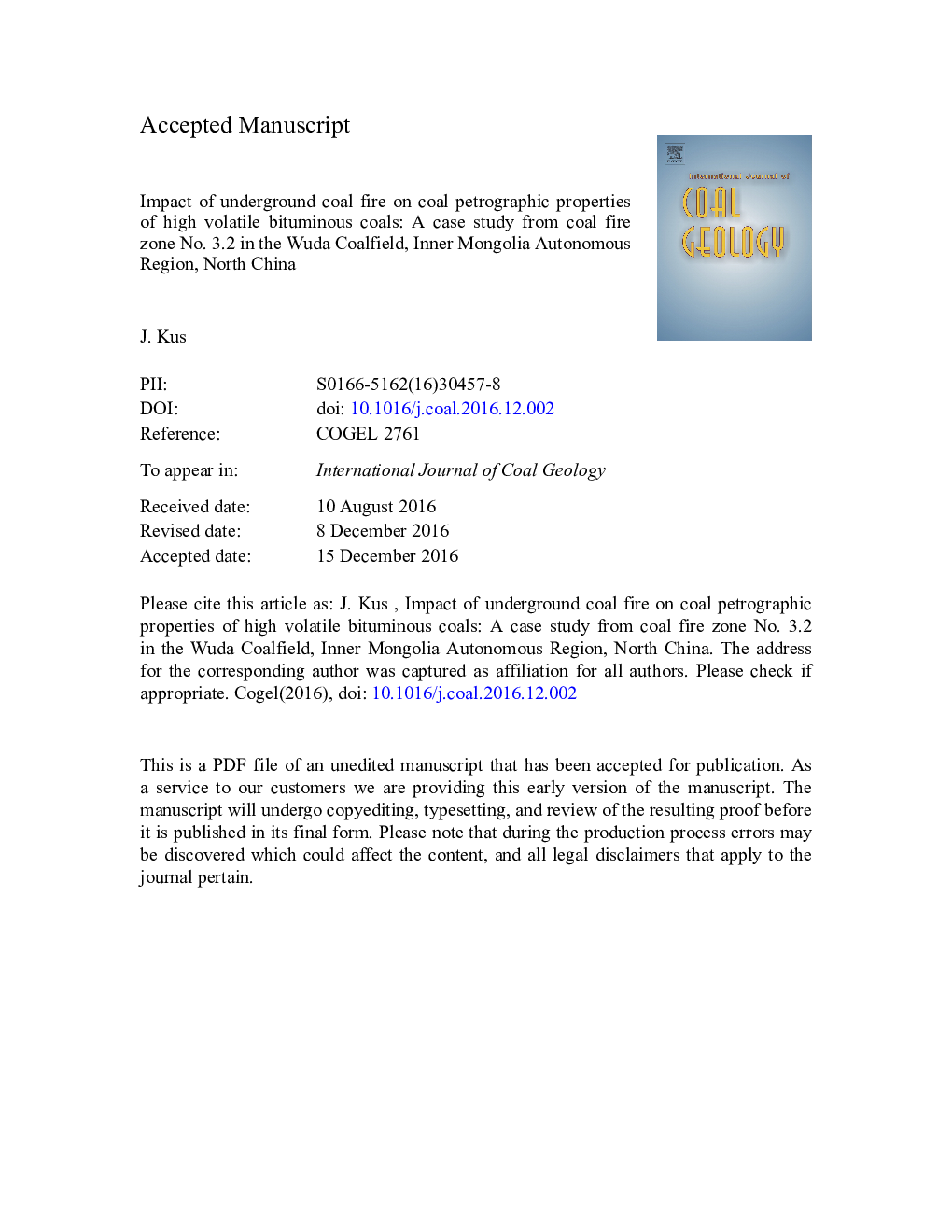| Article ID | Journal | Published Year | Pages | File Type |
|---|---|---|---|---|
| 5483663 | International Journal of Coal Geology | 2017 | 64 Pages |
Abstract
The present paper investigates the impact of the underground coal fire on the coal seam No. 10 by application of coal petrographic methods, including detailed characteristic of macerals and other coal components, maceral analysis, microstructural analysis, and vitrinite reflectances performed on (1) coal grains lacking impurities, microfractures, dark oxidation rims, (2) on dark-rimmed vitrinite, as well as (3) on low-temperature semi-coke. The investigated coal seam No. 10 represents a high volatile A bituminous coal and is dominated by vitrinite, followed by inertinite with minor amounts of liptinite and by non-isotropic low-temperature semi-coke. The microstructure of the oxidatively and thermally altered coals is represented by (1) extensive non-tectonic microfissures and non-tectonic microfractures i.e., shrinkage microfractures, leading to defragmentation of coal grains, (2) dark oxidation rims observed at grain margins, non-tectonic microfissures and microfractures, and by (3) devolatilisation micropores. Random vitrinite reflectances measured in (1) coal grains lacking impurities, microfractures, and dark oxidation rims, and in (2) dark-rimmed vitrinite at non-tectonic microfissures and fractures reveal significant lateral variations. The presence of low-temperature semi-coke and its marked lower reflectance values are indicative of thermal alteration induced by the underground coal fire in the coal fire zone No. 3.2. The results obtained from the performed analyses of organic matter point to both low-temperature oxidation and low-temperature-pyrolysis processes. The applied coal petrological approach revealed characteristic changes to the coal's microstructure, its petrographic composition, as well as to optical properties induced by the underground coal fire.
Keywords
Related Topics
Physical Sciences and Engineering
Earth and Planetary Sciences
Economic Geology
Authors
J. Kus,
